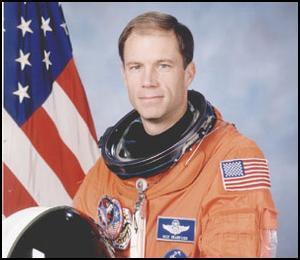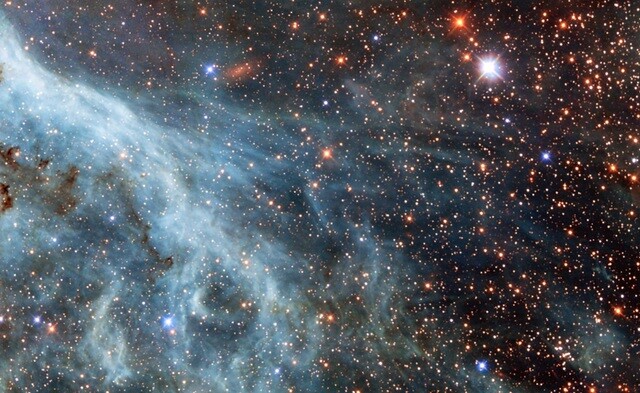From landing men on the moon to helping humans reach interstellar space, these Latter-day Saint pioneers dedicated their lives to exploring the outer most limits of space and expanding our understanding of the celestial.
First LDS Astronaut for NASA

Picture retrieved from theppacerace.com
For first Latter-day Saint astronaut Don Lind, getting to space took almost two decades of grueling training and patience.
As a small boy, Lind and his sisters loved to climb trees in his neighborhood in Midvale, Utah, shaking the branches and pretending they were in a spacecraft hurtling through the universe. At that time, space travel was a feat only dreamed up in comic books and science fiction. It wasn’t until over 20 years later that the first men entered space in 1961. After hearing the news, Lind—then a Navy pilot and doctor of physics—knew he had found his calling.
Lind was accepted into NASA’s space program in 1966 where he underwent rigorous physical and mental training courses. “Our training involved night-shifts at the local hospital emergency room to learn what to do if we had to perform emergency surgery in space,” Lind said. “We learned survival skills in the Panamanian jungle, which we’d need if we landed far off course. We also were taught graduate-level geology courses.”
Despite having completed his training, Lind had to wait another 19 years before entering space—the longest waiting time for any American in spaceflight history. But Lind kept himself more than busy. He continued working on NASA missions, serving as the director of lunar operations on Apollo 11 when man first walked on the moon.
► You'll also like: LDS Astronaut Shares What It's Like Taking the Sacrament in Space
Lind’s own spaceflight finally came in 1985 when he boarded the Challenger for an eight-day journey to study the Aurora Australis. Many miracles surrounded Lind’s exploration into space, the largest being simply his safe return home. Just nine months after his mission, the Challenger exploded 73 seconds after liftoff due to faulty O-rings, killing the seven crew members on board. Lind believes that a priesthood blessing he received before his flight protected him and his crew from a similar fate as they hurtled through the earth’s incinerating atmosphere aboard that very space shuttle. Full of faith and gratitude for the Lord’s protection, Lind said, “We weren’t more righteous or more deserving of the Lord’s help—those on the Challenger were good people—but it had been promised us.”
First Latter-day Saint Director of NASA

Picture of the surface of Mars retrieved from nasa.gov
Though he never set a foot in space, James Fletcher is one of the most influential pioneers in the field of space exploration. When Viking I landed on Mars in 1976, when the first space shuttle launched in 1981, and when the Skylab first orbited the earth in 1973, it was all thanks to the innovation and direction of James Fletcher.
A fan of pulling scientific pranks, Fletcher’s fascination with the field began at a young age. After blowing a hole in his basement floor, his parents quickly learned that Fletcher’s blend of curiosity, knowledge, and humor were a hazardous combination. But, Fletcher’s aptitude soon turned to more productive avenues and by age 14, Fletcher could build a small, functioning radio.
From then on, Fletcher’s career skyrocketed. After graduating with a Ph.D. in physics from the California Institute of Technology, Fletcher served as a researcher and professor at Harvard and Princeton, he co-founded the Space Electronics Corporation, and he served as President of the University of Utah—a few among his many professional and academic accomplishments.
In 1971, Fletcher became the Director of NASA, a position he held from 1971-1977 and later from 1986-1989. During his administration and the nine-years in between, Fletcher advised national leaders in space policy, influencing every president from Dwight D. Eisenhower to George H.W. Bush.
Even after his death in 1991, Fletcher’s work continues to expand galaxy limits and inspire imaginative research into the seemingly impossible. On August 25, 2012, Voyager I—a space probe sent under Fletcher’s approval to study the outer solar system—became the first manmade device to enter interstellar space. The Hubble Space Telescope—yet another project approved under Fletcher’s direction—continues to record high-resolution visible-light images, images crucial in calculating the expansion rate of the universe and fundamental in broadening human conceptions of date and time.
First Latter-day Saint Commander in Space

Picture retrieved from nasa.gov
Prior to his expedition into space, Richard Searfoss devoted his life to flight. The decade following his graduation from Williams Air Force Base in 1980, Searfoss spent thousands of hours flying missions throughout England and Idaho before serving as a flight instructor for the U.S. Air Force.
After Searfoss’ flight expertise caught the attention of NASA officials in 1990, he transitioned from a life as an air force colonel to one as an astronaut. In the early 1990s, Searfoss piloted two NASA missions where he performed medical tests on himself and other test subjects, transported nearly two tons of supplies and scientific equipment onto a Russian space station, and participated in the first spacewalk on a space shuttle-space station complex.
In 1998, Searfoss became the commander of a 16-day Neurolab mission that tested the effects of microgravity on the brain and nervous system. In his career as a pilot of both air and space, Searfoss logged over 6000 hours of flight time, flew 77 different types of aircrafts, spent over 939 hours in space, and completed 626 orbits.
First Latter-day Saint Manager of the Space Shuttle

Picture of the Space Station retrieved from esa.int
As far back as he can remember, Ron Dittemore has been intrigued by the concept of spaceflight. Though born in New York in 1952, Dittemore spent most of his childhood out west discovering his passion for golf and space exploration. After graduating from the University of Washington in aeronautical and astronautical engineering, Dittemore discovered another passion as energetic and “electric” as his love of space: his faith in God. Dittemore was baptized as a member of the LDS Church at the age of 23. Since then, he has lived a life devoted to discovering more about the mysteries of God through space travel.
In his over a quarter-century career with NASA beginning in 1977, Dittemore has served as a director on 11 space shuttle missions and deputy assistant director of the Space Station Program. In 1999, he assumed the position of manager of the Space Shuttle Program, a position he held for four years. A proud father of two and a faithful Latter-day Saint, Dittemore’s life has helped many to better understand the awe-inspiring and celestial nature of God’s creations.

